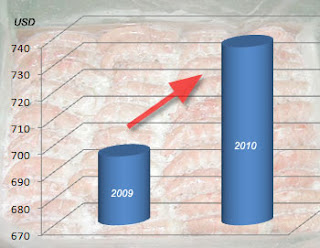The impact of trawling on our ecosystem can be considered to be larger than we realize. According to the analysis concerning the world’s trawling, the footprint of global trawling is certainly bigger than many people believe.
Trawling is known as the pulling of weighted nets across the sea floor in order to catch targeted fish species. Trawling grounds are areas of the deep-sea where commercial trawling either legal or illegal is basically common.
Trawling is a key basis on the biodiversity of coastal ecosystem. Modern techniques are able not only of depleting of targeted fish species but it also destroys non-targeted fish species together with corals and sponges. Basically, this takes years and years to re-colonize. The natural flooring of bottom dwelling plants and animals is vital because it helps in the survival of ground fish such as cod. It also helps to protect the cod fish. Based on this fact, damaging the seafloor habitat is one of the major factors which lead to declination of fish stocks in heavily trawled regions. In fact, some marine ecologists have compared the effects of trawling on the biology of the seafloor to the effects of clear cutting on forest ecosystems.
However, the increase use of deep-water trawling will eventually result in continuous destruction of the marine ecosystem. Furthermore, fishers are trawling outside the continental shelf intensifying into regions that before were not frequently swept by trawlers. Harvesters are trawling to a depth of 400 m or above. Even in certain areas, trawling is taking place to a depth of 1 500m. As species living in deep water are considered to grow slower than shallow-water species, the negative impact on the ecosystem will definitely increase will the increase in trawl depths. This can result in long-term impacts which will directly fisheries and even the oceans.
Ref:
http://earthtrends.wri.org/features/view_feature.php?theme=1&fid=10
